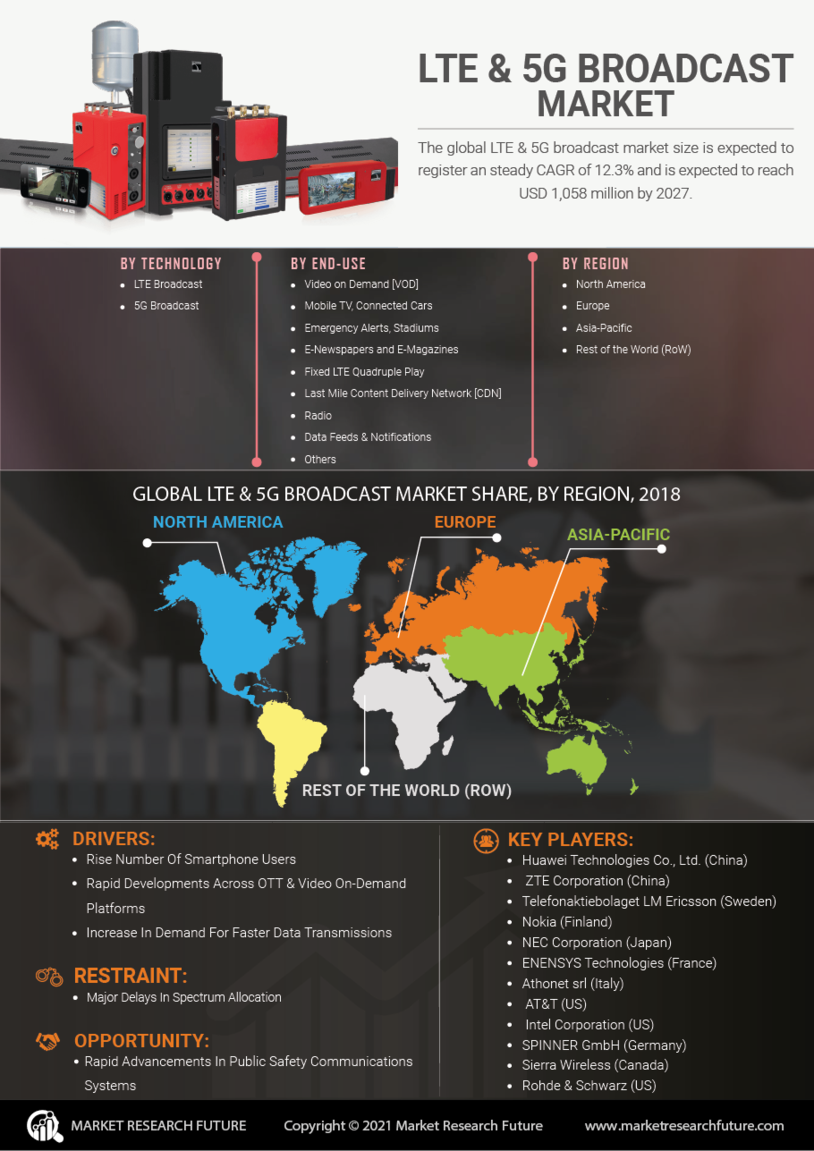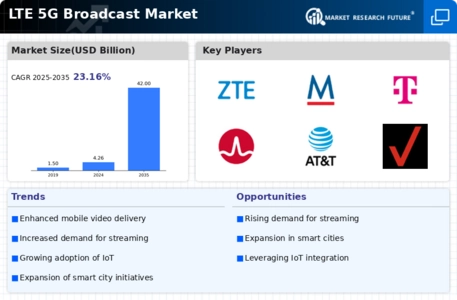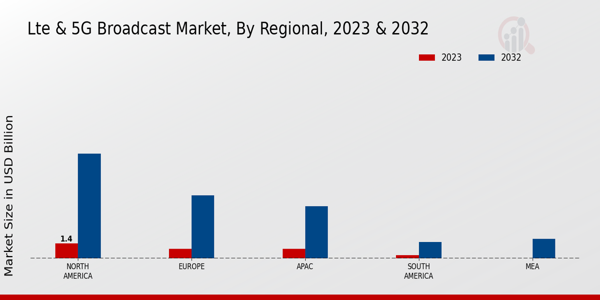Market Growth Projections
The Global LTE 5G Broadcast Market Industry is projected to experience remarkable growth over the next decade. With an estimated market value of 4.26 USD Billion in 2024, it is expected to escalate to 42.0 USD Billion by 2035. This growth trajectory suggests a compound annual growth rate (CAGR) of 23.13% from 2025 to 2035. Such projections highlight the increasing importance of 5G broadcasting technologies in various sectors, including entertainment, education, and public safety. The anticipated growth underscores the need for stakeholders to adapt to evolving market dynamics and invest in innovative solutions that meet the demands of a rapidly changing digital landscape.
Advancements in 5G Technology
Technological advancements in 5G networks play a crucial role in propelling the Global LTE 5G Broadcast Market Industry forward. The enhanced capabilities of 5G, including higher data rates and lower latency, enable more efficient broadcasting of content to a larger audience. As network operators invest in infrastructure upgrades, the market is poised for substantial growth. By 2035, the market is anticipated to expand to 42.0 USD Billion, indicating a robust trajectory fueled by these advancements. The integration of edge computing and network slicing further optimizes broadcasting capabilities, allowing for tailored content delivery and improved user experiences.
Growing Interest in Smart Cities
The concept of smart cities is gaining traction globally, which has a profound impact on the Global LTE 5G Broadcast Market Industry. As urban areas evolve to incorporate advanced technologies, the demand for efficient broadcasting solutions rises. Smart city initiatives often rely on real-time data and communication networks to enhance urban living. The integration of 5G broadcasting within smart city frameworks could facilitate improved public services, traffic management, and emergency response systems. This trend indicates a potential for collaboration between telecommunications providers and city planners, creating opportunities for innovative broadcasting applications that cater to urban populations.
Increased Adoption of IoT Devices
The proliferation of Internet of Things (IoT) devices contributes significantly to the expansion of the Global LTE 5G Broadcast Market Industry. As more devices become interconnected, the demand for seamless content delivery across various platforms intensifies. This interconnectedness facilitates real-time data sharing and enhances user engagement. The market's growth is supported by the increasing number of IoT devices, which are projected to reach billions globally in the coming years. This trend suggests a potential for innovative broadcasting solutions that cater to diverse user needs, thereby driving market growth and creating new revenue streams for service providers.
Government Initiatives and Investments
Government initiatives aimed at enhancing telecommunications infrastructure are pivotal for the Global LTE 5G Broadcast Market Industry. Many countries are actively investing in 5G rollout programs to improve connectivity and support economic growth. These initiatives often include funding for research and development, as well as incentives for private sector participation. Such investments are likely to accelerate the adoption of 5G broadcasting technologies, fostering a conducive environment for market expansion. As governments recognize the strategic importance of advanced communication networks, the market is expected to benefit from increased funding and policy support, further driving growth.
Rising Demand for Mobile Video Content
The Global LTE 5G Broadcast Market Industry experiences a surge in demand for mobile video content, driven by the increasing consumption of streaming services. As consumers gravitate towards high-definition video and live broadcasts, the need for efficient broadcasting technologies becomes paramount. In 2024, the market is projected to reach 4.26 USD Billion, reflecting the growing appetite for mobile video. This trend is likely to continue, as advancements in 5G technology enhance the quality and accessibility of video content, thereby attracting more users and advertisers alike. The potential for monetization through targeted advertising further fuels this demand.
















